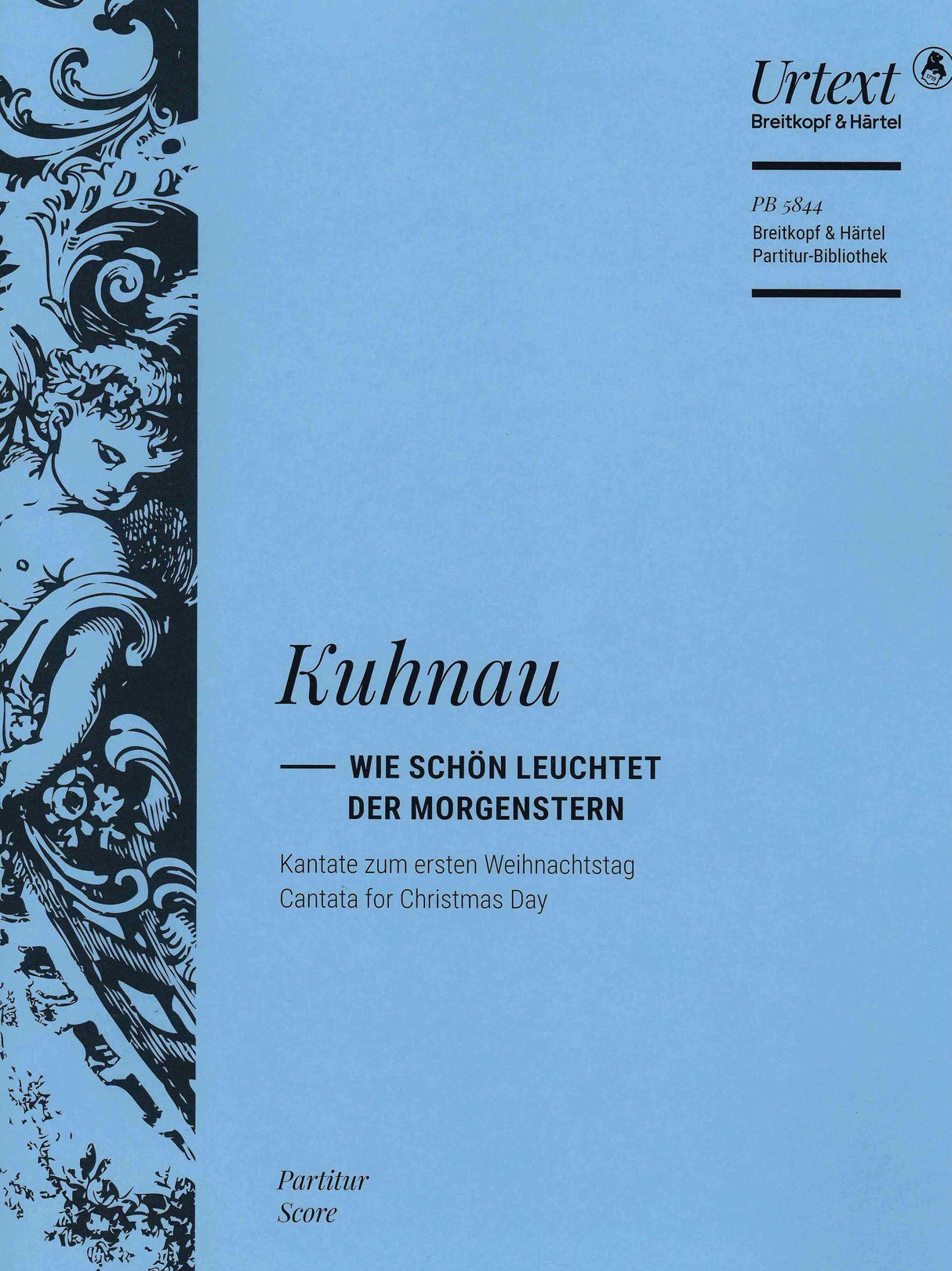Kuhnau: Wie schön leuchtet der Morgenstern
Cantata for Christmas Day
Expected to ship in 1-2 weeks.
- Composer: Johann Kuhnau (1660-1722)
- Piano reduction: Andreas Köhs
- Editor: David Erler
- Instrumentation: SATB Choir, Chamber Orchestra
- Work: Wie schön leuchtet der Morgenstern (Christmas Cantata)
- Work Language: German
- ISMN:
- Size: 7.5 x 10.6 inches
- Pages: 28
- Urtext / Critical Edition
Description
Johann Kuhnau's cantata "Wie schön leuchtet der Morgenstern" is based on the chorale of the same name by Philipp Nicolai from 1599 and uses two verses of it in the opening and closing movements. The other texts are based on various biblical passages, but have no direct references to the other chorale verses. Due to the unknown text, the date of composition is also uncertain; but the two horns used, along with the "flauti" in aria No. 4, which are presumably transverse flutes, are an indication of a late composition from 1718 onwards. The same applies to the tenor soloist, who is the only solo voice to emerge here and whose range corresponds exactly to that which is common in Johann Sebastian Bach's vocal works. There are also parallels to the choral cantata "Welt adieu, ich bin dein müde" (PB/OB 32092), which can be dated to 1719 or 1720.
Like various other works by Kuhnau, the cantata is well suited for use in church services due to its short duration and compact form. The scoring with two horns and flutes in addition to two violins, violas and basso continuo contributes to the festive atmosphere. A choir can be used flexibly depending on the size and abilities of the ensemble.
Publishers use a lot of words to describe what they sell, and we know it can be confusing. We've tried to be as clear as possible to make sure you get exactly what you are looking for. Below are descriptions of the terms that we use to describe the various formats that music often comes in.
Choral Score
A score for vocalists that only contains the vocal lines. The instrumental parts are not there for reference. Generally, cheaper than a vocal score and requires multiple copies for purchase.
Facsimile
Reproductions of the original hand-written scores from the composer.
Full Score
For ensemble music, this indicates that the edition contains all parts on a single system (there are not separate parts for each player). In larger ensembles, this is for the conductor.
Hardcover
Hardbound. Generally either linen-covered or half-leather.
Orchestral Parts
Similar to a wind set, this is a collection of parts. In the case of strings, the numbers listed are the number of copies included, though generally these are available individually (often with minimum quantities required).
Paperback
When publishers offer multiple bindings (e.g. hardcover) or study scores, this is the "standard" version. If you're planning to play the music, this is probably what you want.
Performance / Playing Score
A score of the music containing all parts on one system, intended for players to share. There are not separate parts for each player.
Set of Parts
For ensemble music, this indicates that there are separate individual parts for each player.
Solo Part with Piano Reduction
For solo pieces with orchestra, this is a version that contains a piano reduction of the orchestra parts. For piano pieces, two copies are typically needed for performance.
Study Score
A small (think choral size) copy of the complete score meant for studying, and not playing. They make great add-ons when learning concertos and small chamber works.
Vocal Score
A score prepared for vocalists that includes the piano/organ part or a reduction of the instrumental parts.
Wind Set
For orchestral music, this is a collection of wind and percussion parts. The specific quantities of each instrument are notated.
With Audio
In addition to the printed music, the edition contains recordings of the pieces. This may be an included CD, or access to files on the internet.
With / Without Fingering (Markings)
Some publishers prepare two copies - a pure Urtext edition that includes no fingering (or bowing) suggestions and a lightly edited version that includes a minimal number of editorial markings.



